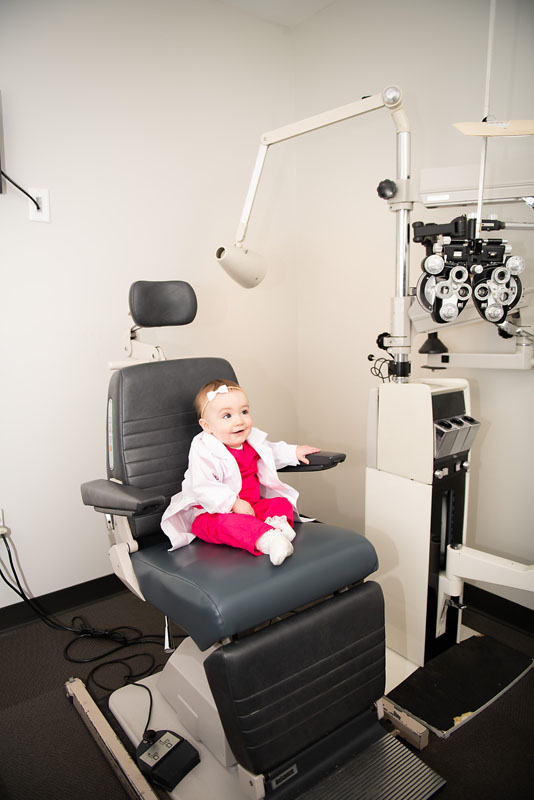What to expect in the eye examination in different stages of childhood:
The Infant Examination:
Understandably, most parents are concerned with the overall health of their new baby. But strangely, few have their child’s eyes examined early in life.
We believe in the importance of an infant’s first eye examination early, and we participate in Infantsee, a program which provides a no-cost eye examination for all infants under one year of age.
We recommend the first eye examination between the ages of 6 and 12 months of age. Many parents are surprised by this but our doctors are able to accurately determine an infant’s prescription even without any input from the patient. They will accurately measure and test for excessive or unequal amounts of nearsightedness, farsightedness, or astigmatism. In addition, the examination will assess eye movement skills, ocular development, and check for ocular disease. These conditions are less common, but are more easily corrected when treated early.
The Preschool Examination:
Depending on findings from the initial examination, your child should again be seen between the ages of one and three. Another thorough eye examination will determine that your preschooler’s vision is developing properly and there is no evidence of eye disease. If needed, our doctors can prescribe treatment including glasses and/or vision therapy to correct an early vision development problem. Remember, most vision and eye conditions are more easily treated when detected early.
The School-Age Child Examination:
Currently, there are laws stating that all children must have dental examinations prior to starting school. There are no such regulations for eye examinations, which may seem odd because good vision is more crucial for learning than clean teeth!
A good education for your child starts with good schools, good teachers and good vision. Your child’s eyes are constantly in use in the classroom and at play. When his or her vision is not functioning properly, learning and participation in recreational activities will also suffer.
The examination of the school-aged child includes assessment of near and distance visual acuity, ocular motility and alignment, and focusing skills.
If any of these or other vision skills are lacking or do not function properly, your child will have to work harder. This can lead to headaches, fatigue/eyestrain, or avoidance of near work or schoolwork. As a parent, be alert for symptoms that may indicate your child has a vision or visual processing problem.

It is important to let us know if you notice your child frequently:
- Loses their place reading
- Avoids near work
- Holds reading material close or adopts unusual posture when reading or writing
- Gets headaches, especially toward the end of the day or on school days
- Rubs their eyes
- Makes frequent reversals when writing
- Loses place when reading, or uses a finger to keep place
- Consistently performs below potential
Since vision changes can occur without you or your child noticing them, your child should visit the eye doctor at least once a year. Also keep in mind, your child’s eyes may change more frequently than once per year. If you notice your child squinting or struggling, please contact us to determine if his/her vision has changed!

